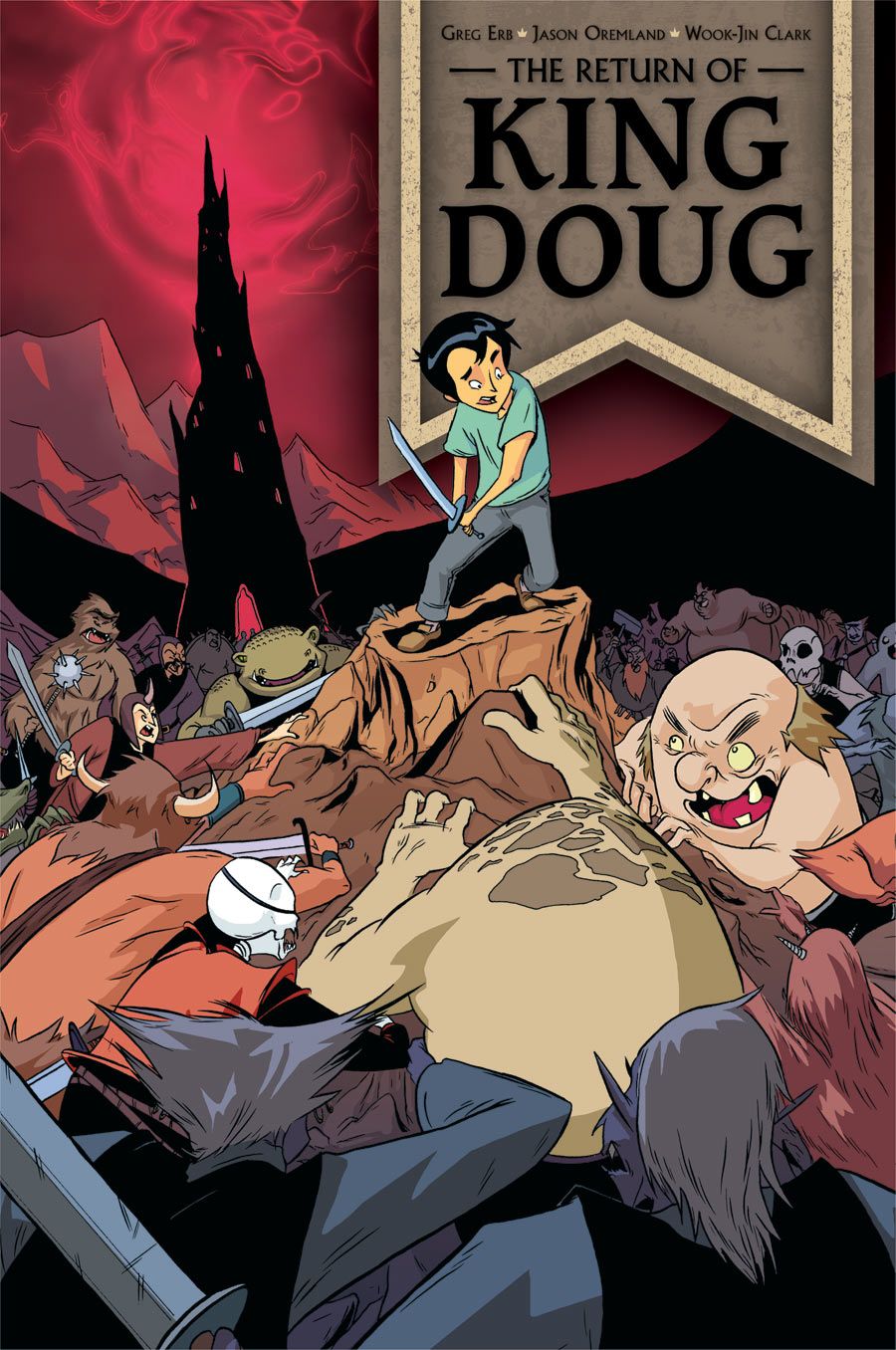From two of the writers of "The Princess and the Frog" comes another off-beat fairy tale that is equal parts "Chronicles of Narnia," "Bill & Ted's Excellent Adventure," and "Santa Clause" featuring the tale of Doug Peterson. The story starts with young Doug Peterson in the land of Valdonia, where he vows to lead the Valdonians into war against the Dark Queen. Once the reality of such a skirmish is described to him, Doug wises up the same as any eight-year-old would and runs home, claiming dinner time.
Years later, we find Doug as a divorcee, struggling to find his place in life. He's left Valdonia behind him, under a pile of therapy. When we meet the grown-up Doug, it's his weekend to care for his son, Oscar. Doug decides it is time to revisit his parents' vacation home -- the same home in the Poconos where Doug found a nearby portal that transported him to Valdonia. See where this is going? Yup. Doug and Oscar wind up back in the land Doug ran from, only lots of things have changed.
This book is filled with fairy tale and storybook cliches -- absolutely jam-packed -- yet those nuggets are arranged in such an order, and juxtaposed in such a manner, as to make the story seem exciting, new, and fresh. Magic mirrors, evil queens, talking centaurs, and magic portals - sure, you've seen those things before, but here they receive a bit of a polish that makes them fun again. It's not as though the old ideas are brand-new, but this story is.
In some spots, it drags out a little, in others it hops around a bit frantically, but overall, the story is quite enjoyable. It's not all doom and gloom, and it's not overly silly. It's a solid read that has a lot of fun ideas, entertaining exchanges, and engaging characters. In a Disney-esque moment, while trying to find his lost son, Doug encounters the Oracle of the Mountain and the Sooth-Sayer of the Mountain. Same mountain, two visionaries trying to "help" Doug. In typical cartoon fashion, Doug decides to mosey on while the two are bickering over who is more prolific.
The art, however, leaves a little to be desired. Wook-Jin Clark's artwork makes for a great collection of storyboard panels, but it is at times a jarring read as a comic. Some of the panel-to-panel transitions just happen. This is definitely an easy-to-improve upon area of Clark's work, and his characters are lively and energetic.
I think the book would be more cohesive in color, or with a deeper set of grays, but as straight-up line art, it just feels like it wants to be more. Clark's art is good, the story needs to be rendered in a cartoony manner to have heart and fun, and Clark does so, but a little more detail and depth would make the story more enjoyable and it would have held my attention longer.
Clocking in at 184 pages, this is not a quick read, but it is a fun one. This isn't standard comic book fare, and given the anticipated success of "The Princess and the Frog," I would expect this title will get more than a cursory glance from comic fans, animation fans, and studios.
To me this book is kind of like "Leave it to Chance" in that it is everything you expect, just not necessarily how you would expect it. The end result is a fun read that can -- and should -- be shared. After all, like the citizens of Valdonia, this isn't the last you'll see o

